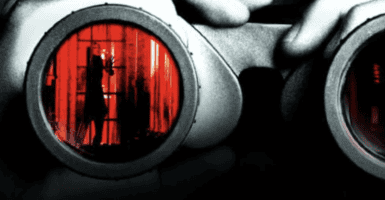Algorithms Help Hide Public Eyesores
 Eyesores are a necessary evil in public spaces. Even beautifully landscaped parks require trashcans, port-o-potties, and electrical boxes. While no one can dispute their practical necessity, it’s also tough to dispute their disruption to the aesthetic appeal of otherwise picturesque places. Researchers from MIT recently sought to tackle this problem, and at next month’s conference on Computer Vision and Pattern Recognition, they’ll present an algorithm they devised to analyze photos and generate camouflage for unattractive objects in the area.
Eyesores are a necessary evil in public spaces. Even beautifully landscaped parks require trashcans, port-o-potties, and electrical boxes. While no one can dispute their practical necessity, it’s also tough to dispute their disruption to the aesthetic appeal of otherwise picturesque places. Researchers from MIT recently sought to tackle this problem, and at next month’s conference on Computer Vision and Pattern Recognition, they’ll present an algorithm they devised to analyze photos and generate camouflage for unattractive objects in the area.
The researchers tested various algorithms with Amazon’s Mechanical Turk. Volunteers tried to identify camouflaged objects in the manufactured images, and the algorithms were scored accordingly. The most successful ones hid objects that took users more than three seconds to find. The developers aren’t trying to keep objects hidden forever—they’re just trying to provide cover so that a casual glance can’t detect them, and they’ve succeeded.
Contemporary research in the field of computer vision hinges on fast and accurate identification of objects. Deep learning software, which Google, Microsoft, and Facebook all now use, also focuses on object and facial recognition. The camouflage algorithm essentially works in the opposite way by avoiding visual cues such as shapes and textures. For the project, researchers assumed a basic box shape for the camouflaged object. They took photos of the objects from different angles, and for each one designed a covering that would make the object disappear into the background. What works for one shot or angle doesn’t work for another, so one of the algorithms simply averages the colors and patterns that work for each shot. Another chooses the camouflage for a particular shot randomly. These simpler versions were incorporated into Mechanical Turk as baselines.
Another algorithm figures out which angle requires the least amount of work, essentially trying to find an angle that most closely aligns the shape the viewer sees and the shape of the object meant to be hidden. From there, the procedure became even more complex. One divides the object into a grid and matches each grid square with a camera angle, transitioning between squares and angles as smoothly as possible. Sometimes, this leads to some strange effects, like the forking of the book spines in the video below, but in all of the shots, the boundaries between objects still look fluid and smooth. The process essentially combines fairly standard photo editing techniques with three-dimensional, real-world objects.












